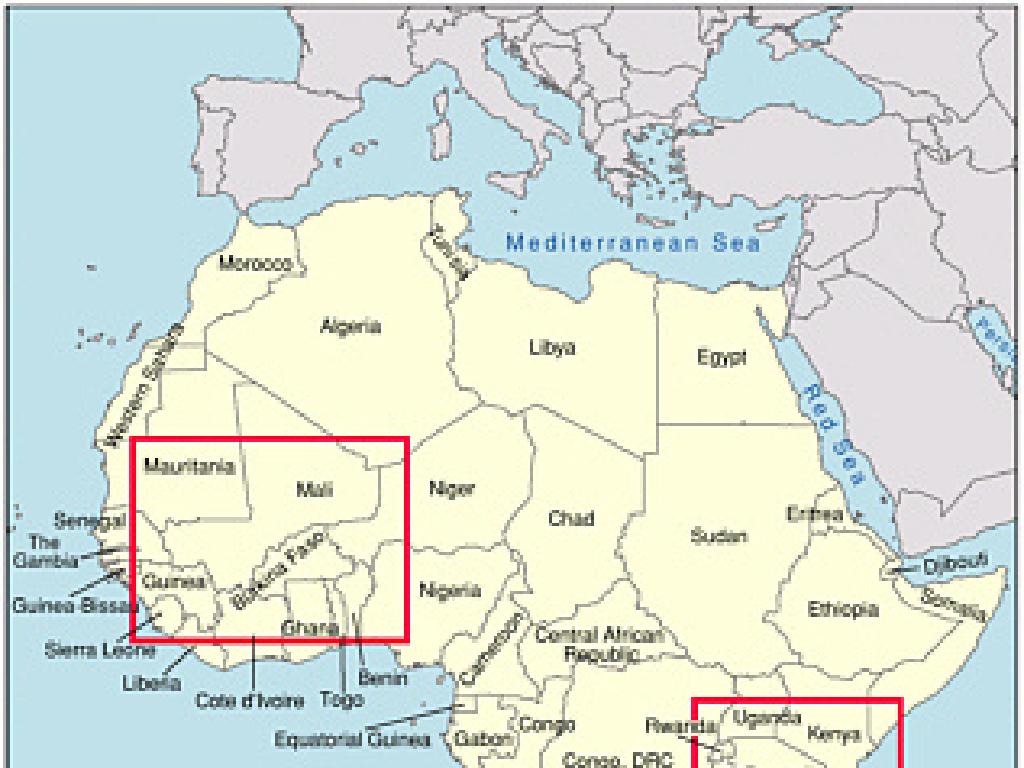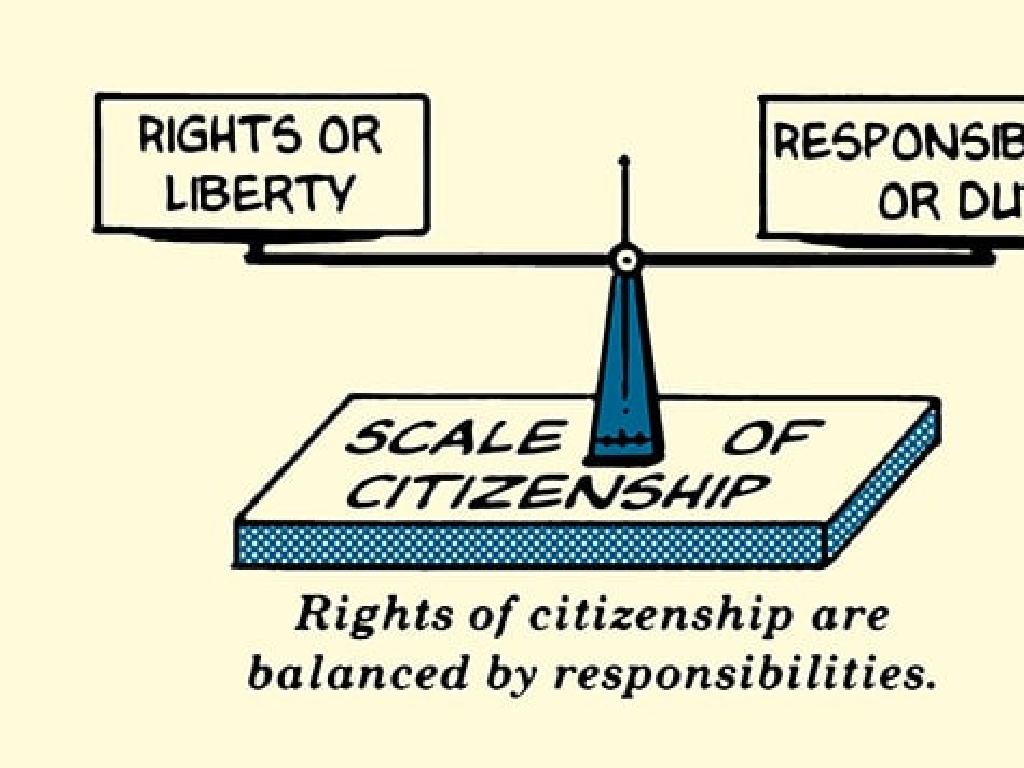Causes Of The American Revolution: New Taxes And Colonial Response
Subject: Social studies
Grade: Eighth grade
Topic: The American Revolution
Please LOG IN to download the presentation. Access is available to registered users only.
View More Content
Roots of Rebellion: Causes of the American Revolution
– Origins of the American Revolution
– How the quest for independence began
– Factors leading to the revolt
– Economic and political pressures on the colonies
– Overview of colonial discontent
– Grievances that fueled the desire for change
– Focus on new taxes and responses
– Examining the Stamp Act and Tea Act and colonial reactions
|
This slide introduces the complex causes behind the American Revolution, emphasizing the buildup of tension between the colonies and British rule. It’s crucial to convey that the revolution was not a sudden event but a response to a series of actions and policies imposed by Britain, such as the Stamp Act and Tea Act, which led to widespread dissatisfaction. Highlight the importance of understanding these roots to comprehend the development of the United States. Engage students by asking them to consider what they would do if faced with similar taxes and restrictions. This sets the stage for a deeper dive into the specific taxes and acts that led to the colonial response and ultimately, the American Revolution.
Colonial Life Before the American Revolution
– Daily life in the 13 Colonies
– Agriculture, trade, and self-governance marked colonial life.
– Colonies-Britain relationship pre-Revolution
– Colonies had a generally cooperative and beneficial relationship with Britain.
– Pre-Revolution taxes and trade
– Taxes were minimal; trade was regulated but profitable.
– Impact of British policies on colonists
– Resentment grew as Britain imposed stricter controls and taxes.
|
This slide aims to set the stage for understanding the causes of the American Revolution by exploring the status quo before the conflict. Focus on the daily life of colonists, which was largely agrarian with a growing trade economy. Highlight the initially positive relationship with Britain, which allowed for a degree of self-governance and economic growth. Explain the old tax system and trade regulations, emphasizing that they were manageable and often circumvented. Discuss how changes in British policies, including increased taxation without representation, began to strain this relationship and plant the seeds of discontent that would lead to revolution. Encourage students to consider how they would feel if their autonomy and prosperity were suddenly threatened by an external power.
New Taxes and Colonial Response
– The Stamp Act: 1765 taxation on paper
– Imposed direct tax on printed materials, causing widespread dissent
– Townshend Acts: Taxes on imports, 1767
– Levied taxes on glass, lead, paints, paper, and tea, leading to boycotts
– The Tea Act: Monopoly & tax on tea, 1773
– Gave East India Company control over tea sales, undercutting colonial merchants
– Boston Tea Party: Protest against Tea Act
– Colonists dumped 342 chests of tea into Boston Harbor as an act of defiance
|
This slide outlines the progression of new taxes imposed by Britain on the American colonies and the subsequent colonial responses. The Stamp Act represented the first direct tax on the colonists, affecting a wide range of paper goods and sparking the first major wave of protests. The Townshend Acts further inflamed tensions by taxing essentials and imported goods, which led to widespread boycotts and heightened resentment. The Tea Act of 1773, aimed at saving the faltering East India Company, granted it a monopoly that directly affected colonial merchants and consumers, culminating in the iconic Boston Tea Party. This act of protest was a pivotal moment, rallying the colonies against British rule and setting the stage for the American Revolution. Encourage students to consider the perspective of both the British and the colonists to understand the complexities of the situation.
Colonial Response to British Policies
– Boycotts as a form of protest
– Refusal to buy British goods to oppose taxation
– The Sons of Liberty
– A secret society formed to protect the rights of the colonists
– The First Continental Congress
– Delegates from 12 colonies gathered to discuss response to Britain
– Unity among the Colonies
– The Congress encouraged collective action against the British policies
|
This slide aims to highlight the various forms of protest that the American colonists used in response to the British policies that they found oppressive, particularly the new taxes imposed without their consent. Boycotts were a widespread and effective form of economic protest. The Sons of Liberty played a crucial role in organizing protests and spreading revolutionary sentiment. The First Continental Congress marked a significant step towards colonial unity, as it was the first time representatives from nearly all the colonies met to coordinate their resistance to British laws. Emphasize the importance of unity and collective action as a powerful response to the British policies, setting the stage for the American Revolution.
The Intolerable Acts and Colonial Unity
– British response to Boston Tea Party
– The Intolerable Acts were punitive laws passed by the British Parliament in 1774 after the Boston Tea Party.
– Understanding the Coercive Acts
– The Coercive Acts included the Boston Port Act, which closed the port of Boston until damages were paid.
– Escalation of colonial tensions
– These acts led to increased frustration and anger among the colonists, setting the stage for revolution.
– The Acts’ role in unifying colonies
– The harshness of the Acts helped unite disparate colonial groups against a common enemy.
|
This slide aims to explain the significance of the Intolerable Acts in the buildup to the American Revolution. After the Boston Tea Party, the British government passed punitive laws to assert control over the colonies, which were collectively known as the Intolerable Acts in America. These laws, particularly the Coercive Acts, were seen as an overreach of power and served to escalate tensions between Britain and the colonies. The Acts played a crucial role in fostering colonial unity as they provided a tangible example of British tyranny, which helped to galvanize support for the revolutionary cause. Discuss how these acts affected different colonies and led to the First Continental Congress, marking a step towards independence.
From Protest to Revolution
– Shift to armed conflict
– Peaceful protests evolved into violent clashes, marking a radical change in colonial resistance.
– Lexington and Concord battles
– Known as the first military engagements of the American Revolutionary War, fought on April 19, 1775.
– Declaration of Independence
– Adopted on July 4, 1776, it marked the colonies’ official break from British rule.
– Birth of a new nation
– The Declaration symbolized the creation of the United States of America.
|
This slide covers the critical transition from peaceful protest to the start of the American Revolution. Discuss how the colonists’ initial attempts to resolve grievances with peaceful protests eventually led to armed conflict as tensions escalated. Highlight the significance of the battles of Lexington and Concord as the first military engagements of the war, which demonstrated the colonists’ willingness to fight for their rights. Explain the importance of the Declaration of Independence, not just as a document, but as a symbol of a new nation’s birth. Emphasize that this marked a definitive turning point in the relationship between the colonies and Great Britain, leading to the establishment of an independent United States.
Class Activity: Debating Taxation
– Divide into British Parliament and Colonial Reps
– Debate tax justifications
– Prepare arguments from today’s lesson
– Present your debate to the class
|
This activity aims to engage students in a historical role-play to better understand the perspectives of the British Parliament and the Colonial Representatives regarding taxation that led to the American Revolution. Before starting the debate, ensure that students have a clear understanding of the reasons behind the new taxes imposed by the British and the colonial response. Encourage them to use facts and arguments discussed in today’s lesson. This will help them to articulate their positions during the debate. Provide guidance on how to structure their arguments and maintain a respectful discourse. Possible activities for different students could include acting as mediators, timekeepers, or even reporters who summarize the debate’s key points.






